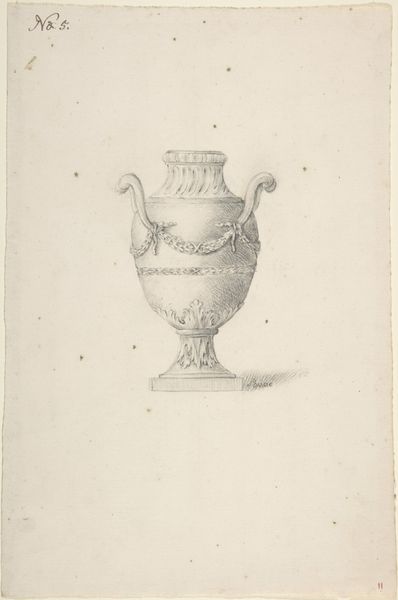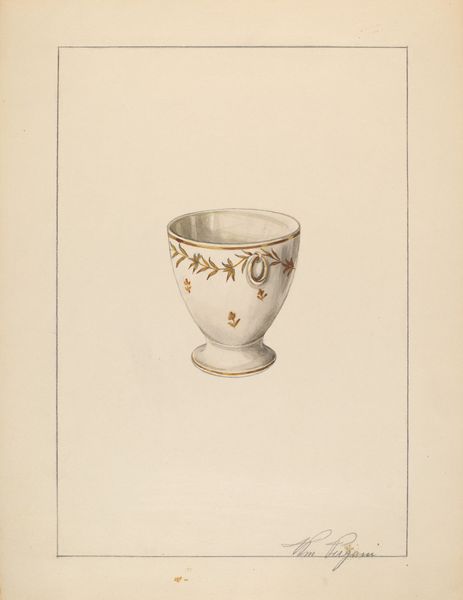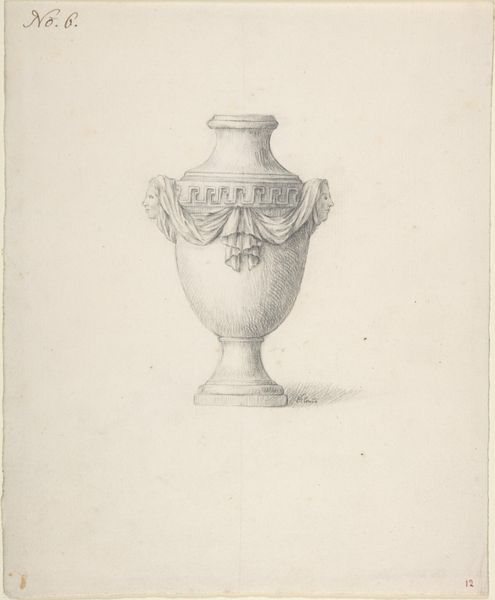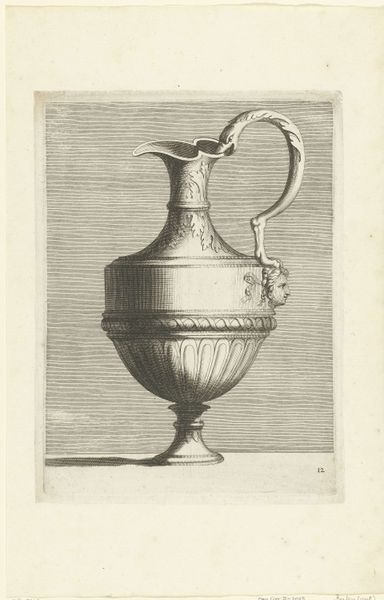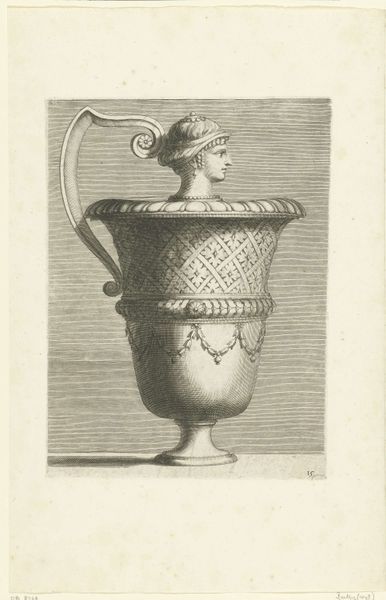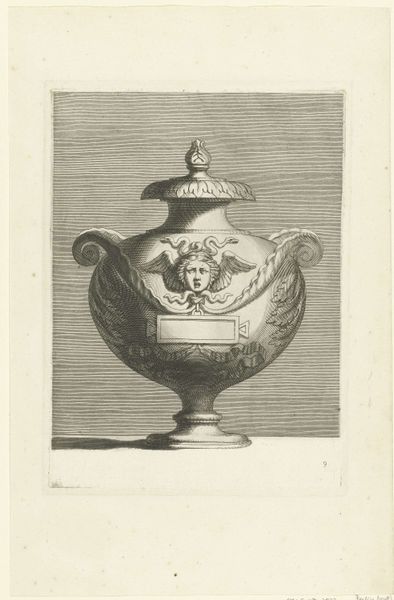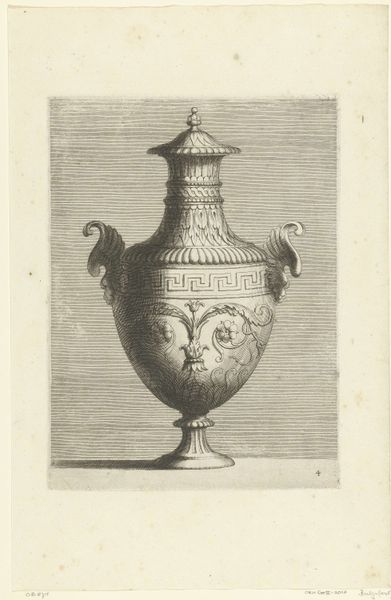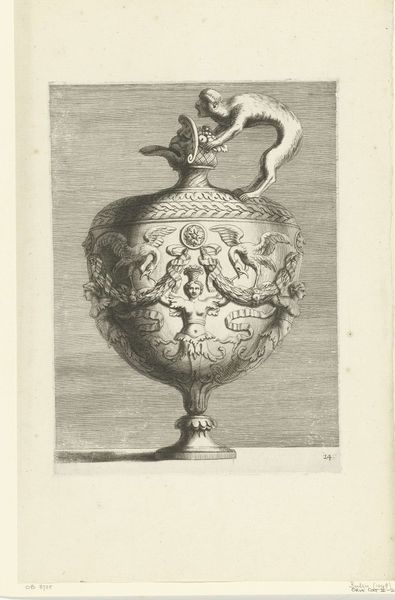
drawing, ceramic, watercolor
#
drawing
#
ceramic
#
watercolor
#
ceramic
Dimensions: overall: 29.2 x 22.8 cm (11 1/2 x 9 in.) Original IAD Object: 10 1/2" High 4 7/8" Dia
Copyright: National Gallery of Art: CC0 1.0
Curator: We’re looking at Nicholas Amantea's watercolor and drawing, simply titled "Jug," from around 1936. Editor: It’s unassuming but charming. There’s something rustic about it. The color palette, those soft greys and blues, evoke a certain nostalgia for simpler times, maybe farm life? Curator: Yes, and observe how the artist handles the form. It’s not photorealistic. He utilizes subtle shading and textures in watercolor and drawing, a conscious move away from mimetic representation toward highlighting the jug's essential shape. Consider also the interesting element of the drawing’s fragment floating in the top right. Editor: Right. This form of vessel, the jug, recurs across many cultures. It is laden with symbolism—representing sustenance, community, sharing resources… Perhaps that red smudge evokes the human touch, wear and tear from handling across generations? Curator: That’s a very relevant point. The jug transcends its purely functional design. However, I must add that in a structuralist vein, the curve of the handle is critical. Notice how the counter curve is matched by the silhouette that pushes out in the middle of the jug, and echoes again in the narrower neck. This creates visual cohesion throughout the object’s representation. Editor: Interesting! And in that context, note how the fragmented jug in the top-right also reinforces those aspects you highlight. Its very existence hints to the cultural and societal importance, beyond utility. It persists as a symbol. Curator: A worthwhile interpretation, grounding formalism with meaningful semiotics, the drawing's careful form hints at the cultural signifiers of usefulness the artifact embodied, but without overly representing that use, it gains symbolic value through careful construction. Editor: I agree, analyzing "Jug" leaves one appreciating how the mundane transforms through symbolism to reflect our collective, perhaps agricultural, past. Curator: It reveals how simple elements, deliberately arranged, can both highlight essential shape and allude to far deeper conceptual understanding.
Comments
No comments
Be the first to comment and join the conversation on the ultimate creative platform.

